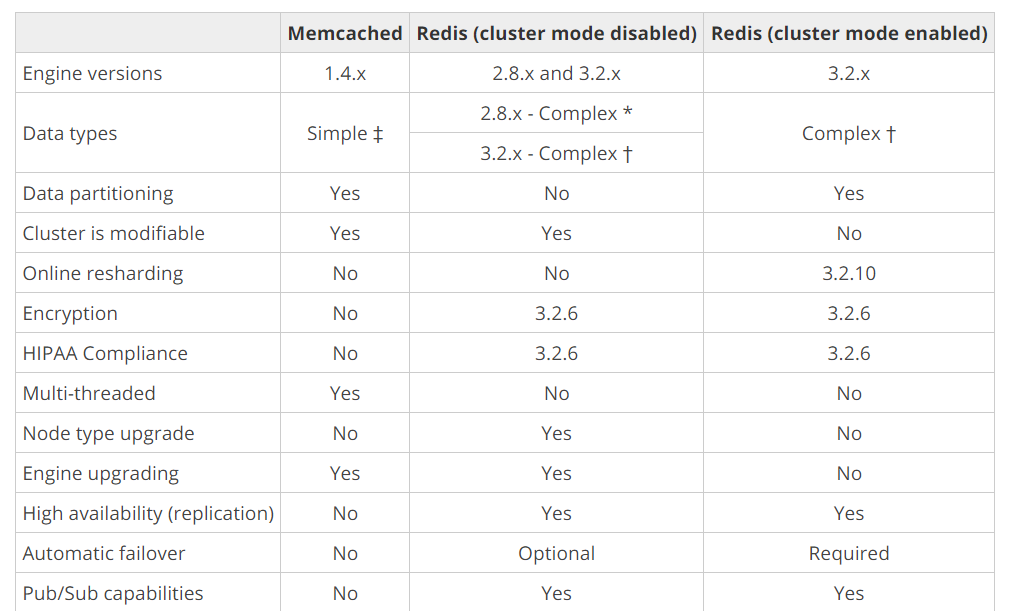Choose the Right Cache Service for Your Application
Question
A company is planning to use a cache service for their application.An important requirement is that trying to recover data lost in cache is an expensive affair for the company, which they would want to avoid.
Which of the following should be used for this purpose?
Answers
Explanations
Click on the arrows to vote for the correct answer
A. B. C. D.Answer - C.
Choose Redis if you want high availability.
The below table gives the comparison.
Option A is incorrect since this is a queuing service available from AWS.
Option B is incorrect since this does not offer high availability.
Option D is incorrect since this is a serverless computing service available from AWS.
For more information on the comparison for the Cache engines, please refer to the below URL-
https://docs.aws.amazon.com/AmazonElastiCache/latest/mem-ug/SelectEngine.html
Option C - Amazon ElastiCache - Redis should be used for this purpose.
Amazon ElastiCache is a fully managed in-memory data store and cache service that provides high-performance, scalable, and secure caching solutions for the applications deployed in AWS. It supports two open-source in-memory caching engines - Redis and Memcached.
Redis is an in-memory data store that can be used as a database, cache, or message broker. It provides advanced data structures and features like persistence, replication, pub/sub messaging, Lua scripting, and transactions. Redis also supports backup and restore operations, which can help recover lost data in case of failures or disasters.
On the other hand, Memcached is a simple, fast, and lightweight in-memory cache that supports key-value pairs and basic operations like get, set, delete, and flush. However, it doesn't support persistence or advanced data structures.
Given the requirement that recovering lost data from cache is an expensive affair for the company, it's important to choose a cache service that provides durability and reliability. Redis, with its persistence and backup features, can help achieve this requirement.
Option A - Amazon SQS queues - is a message queue service that enables decoupling and asynchronous processing of messages between distributed systems or microservices. It's not a cache service and doesn't provide in-memory storage or persistence.
Option B - Amazon ElastiCache - Memcached - is a caching engine that's fast and simple but doesn't provide persistence or backup features, which can make data recovery expensive and difficult.
Option D - Amazon Lambda - is a serverless compute service that runs code in response to events or triggers, such as API calls, file uploads, or database changes. It's not a cache service and doesn't provide in-memory storage or persistence. However, Lambda can be used with ElastiCache or SQS to process cache data or messages asynchronously.